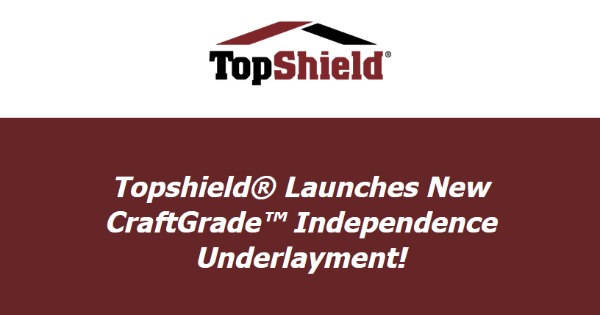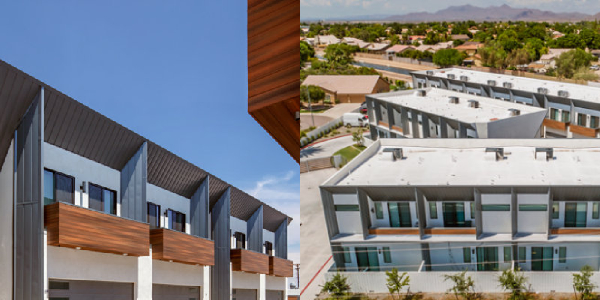UP TO THE MINUTE
Metal Roofing Saves Up to 40% in Energy Costs

By DECRA Metal Roofing.
Educate your customers about the benefits and ongoing returns a metal roof provides homeowners.
Most homeowners don’t realize that metal roofs are considered to be one of the most energy-efficient roofing materials on the market because they reflect heat up and away from buildings, saving homeowners up to 40% in energy costs.
When evaluating a roofing material’s energy efficiency (also known as thermal performance) there are three terms to familiarize your customers with:
-
Emissivity: The ability of the roof to radiate the sun’s heat up and away
-
Reflectivity: The ability of the roof to reflect heat back to the direction from which it came
-
Thermal Resistance: A measurement of a temperature difference by which an object or material resists a heat flow
Emissivity and Granular Coatings
Large warehouses (like your local Costco) utilize the emissive properties of metal roofing to keep their buildings cool and energy costs low. But DECRA Metal Roofing isn’t the same standing seam metal roofing that you see in warehouses or industrial complexes.
First of all, DECRA stone-coated metal roofs don’t look like metal roofs. The granular stone-coating on DECRA roofs perfectly replicates the look of tile, wood shake, and shingle roofs. But the purpose of these granular coatings goes far beyond aesthetics.
DECRA’s granular coatings have infrared blocking pigments that improve thermal performance with their ability to re-emit up to 90% of solar radiation to the atmosphere rather than the building below.
Solar Reflectivity
As mentioned earlier, metal reflects energy from the sun up and away from the home, unlike asphalt shingles that absorb the energy and transmit heat down into the home.
You can help your customers grasp how metal reflects heat by comparing it to the metal hood of a car. Even with the heat from the engine below and from the sun above, the metal hood cools quickly once the engine is off and the car is parked in the shade. The metal dissipates heat so well that, in just a few minutes, the hood of the car will feel cooler to the touch than the surrounding air.
Now ask them to think of the asphalt pavement on a typical city street. After absorbing heat from the sun, the asphalt still has enough thermal energy stored to create steam after a cooling rain. Poor solar reflectivity and low emissivity make asphalt one of the worst choices for energy-efficient roofing. Dark-colored asphalt shingles can reach temperatures as high as 160 degrees during the day and will continue to transmit that heat down into the home long after the sun goes down.
Thermal Resistance
Thermal resistance is the measurement of a temperature difference by which a material resists a heat flow. A 2019 independent report by R&D Engineering details how DECRA Metal Roofing products increased thermal performance by as much as 218% when compared to asphalt shingles.
Thermal resistance calculations can get a bit technical, so if you’d prefer to share a high-level summary of the report with your customers to help them learn exactly how DECRA Metal Roofing products increase thermal performance, direct them to this article Supercharge Energy Efficiency With DECRA Metal Roofing.
More Than Just Energy Savings with DECRA Metal Roofing
The energy-saving numbers above are just a fraction of the ongoing returns you can tell your customers to look forward to when they invest in a DECRA roof, including:
-
Increasing their home’s resale value by up to 6%
-
Insurance premium discounts
The strength of high-grade steel and durable stone coatings make DECRA Metal Roofing the reigning champion of roofing materials in every performance category. This is why only DECRA can protect your customers’ roofing investment with the industry’s most comprehensive Lifetime Limited Warranty.
Learn more about DECRA Metal Roofing on the RCS Directory.
Original article source: DECRA




















Comments
Leave a Reply
Have an account? Login to leave a comment!
Sign In